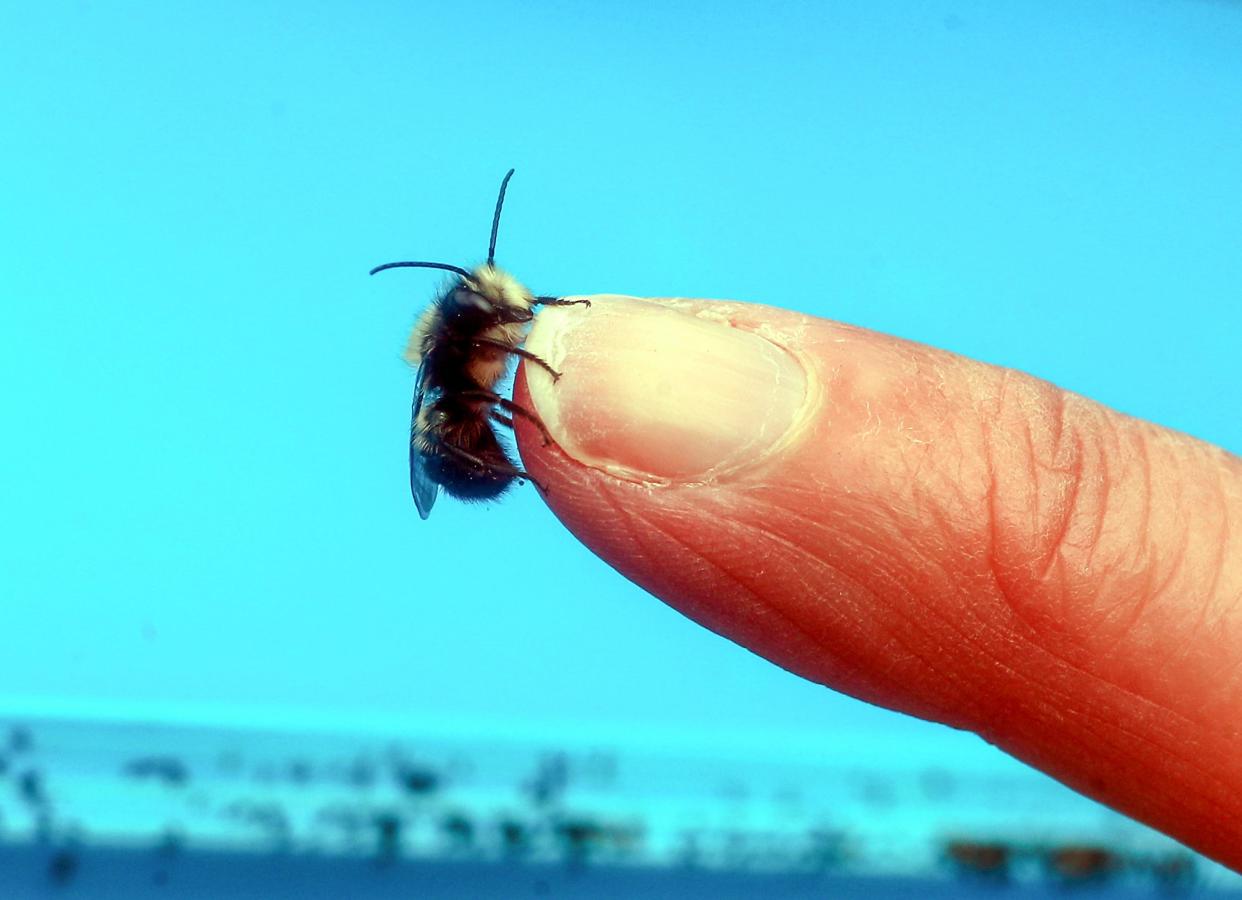Raising native bees in your backyard is easier than you think

We are in a time when a lot of great work is being done to educate people about the importance of pollinators. Pollinators are insects and wildlife that are crucial to a sustainable environment. They are of vital importance to our ecosystem.
Back in the spring, I attended an event at the Cincinnati Zoo supporting their Plants for Pollinators program. There I met Justina Block, the owner of the Osmia Bee Company. Osmia Bee Co. is a family-owned business that has been raising native bees since 2011. In our brief time together, I was very impressed and entertained by her knowledge of bees.
The scientific name for bee is anthophilia, which means "flower lovers." I spoke with Justina this week for more information about the many species of bees we have. I learned that in Ohio, there are 500 known species of native bees. That’s a lot of bees. Some are as small as gnats. Most are not recognizable as bees since only a few bees have black and yellow stripes.
The most popular and well-known bees, honeybees and bumble bees, only represent about half of a percent of all bees. These bees live in colonies, but all of the other bees are known as solitary bees. They live on their own.
Honey and bumble bees are the most recognizable. If you have been stung before, it was probably by one of these. If you were stung, it was by a female, as the males do not have stingers. The stinger has a dual purpose. It is used for protection, and also the ovipositor is used for laying eggs.
Bees do not just randomly sting people. They only sting when they feel threatened, usually when they are protecting the colony or nest. The bees that are buzzing around your flowers are working hard, collecting pollen, and basically minding their own business. Realistically, if you are getting stung, you most likely deserve it.
The solitary species of bees are not aggressive at all. They do not live in hives or colonies, so they have nothing to protect. The solitary species of bees are the best pollinators. Their bodies were built to carry pollen. Solitary bees are also seasonal, with different species living at different times of the season.
This is what Justina’s business is all about. The name Osmia is the genus of 242 species of solitary bees. The Osmia Bee Company provides you with a simple kit that has everything you need to raise bees native to North America in your backyard. When you introduce more native bees into your yard, you will see the surrounding vegetation thrive. If you are growing fruits and vegetables, you will see increased production with better pollination.
The simple kit she provides has a nesting house. Then you receive cocoons containing the bees. When the weather and time are right, the bees will emerge from the cocoons and go to work in your garden. At the end of the season, you will harvest the cocoons for next year’s bees. More information about Osmia Bee Company, and how this all works, can be found at osmiabee.com.
This article originally appeared on Cincinnati Enquirer: Raising bees is easier than you think. Here's how.

